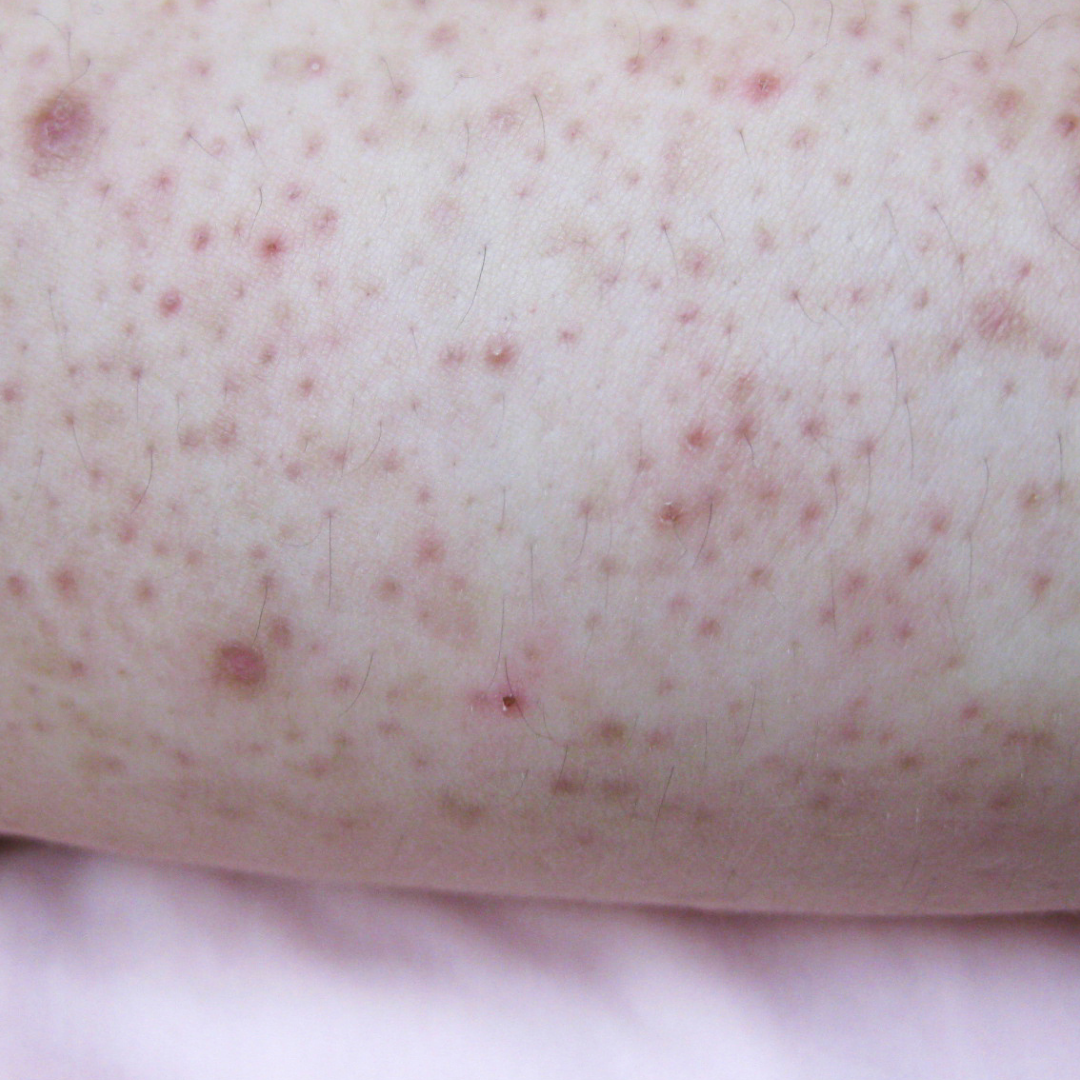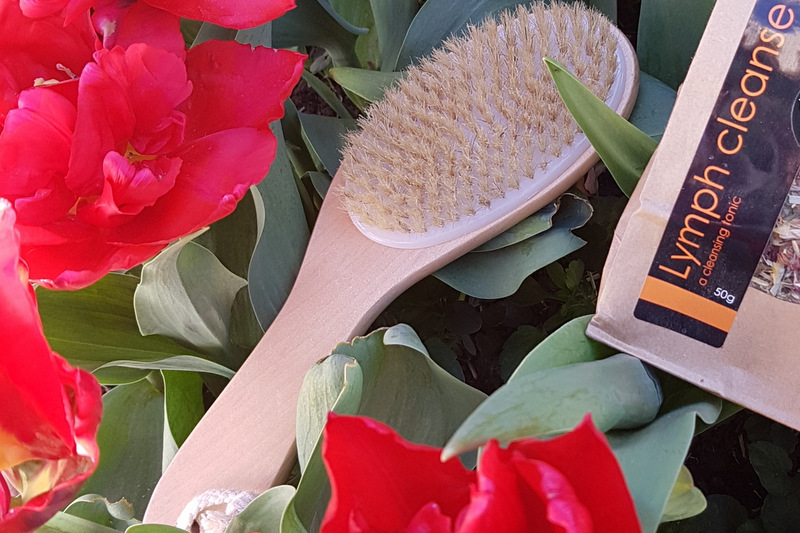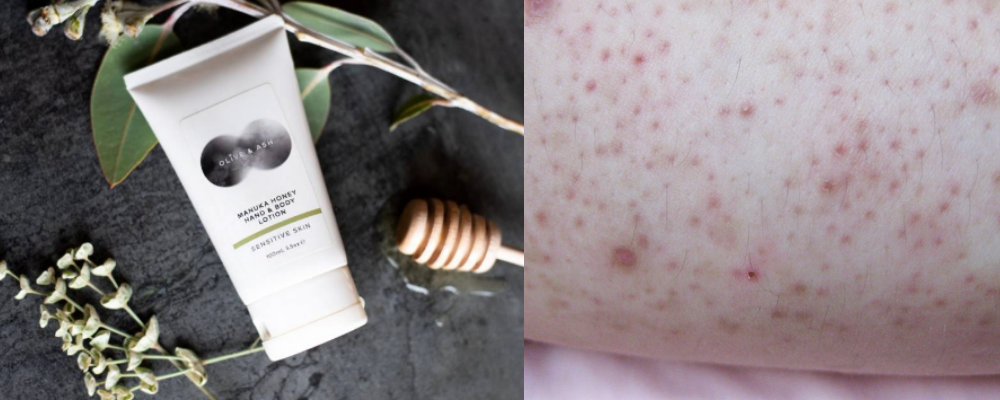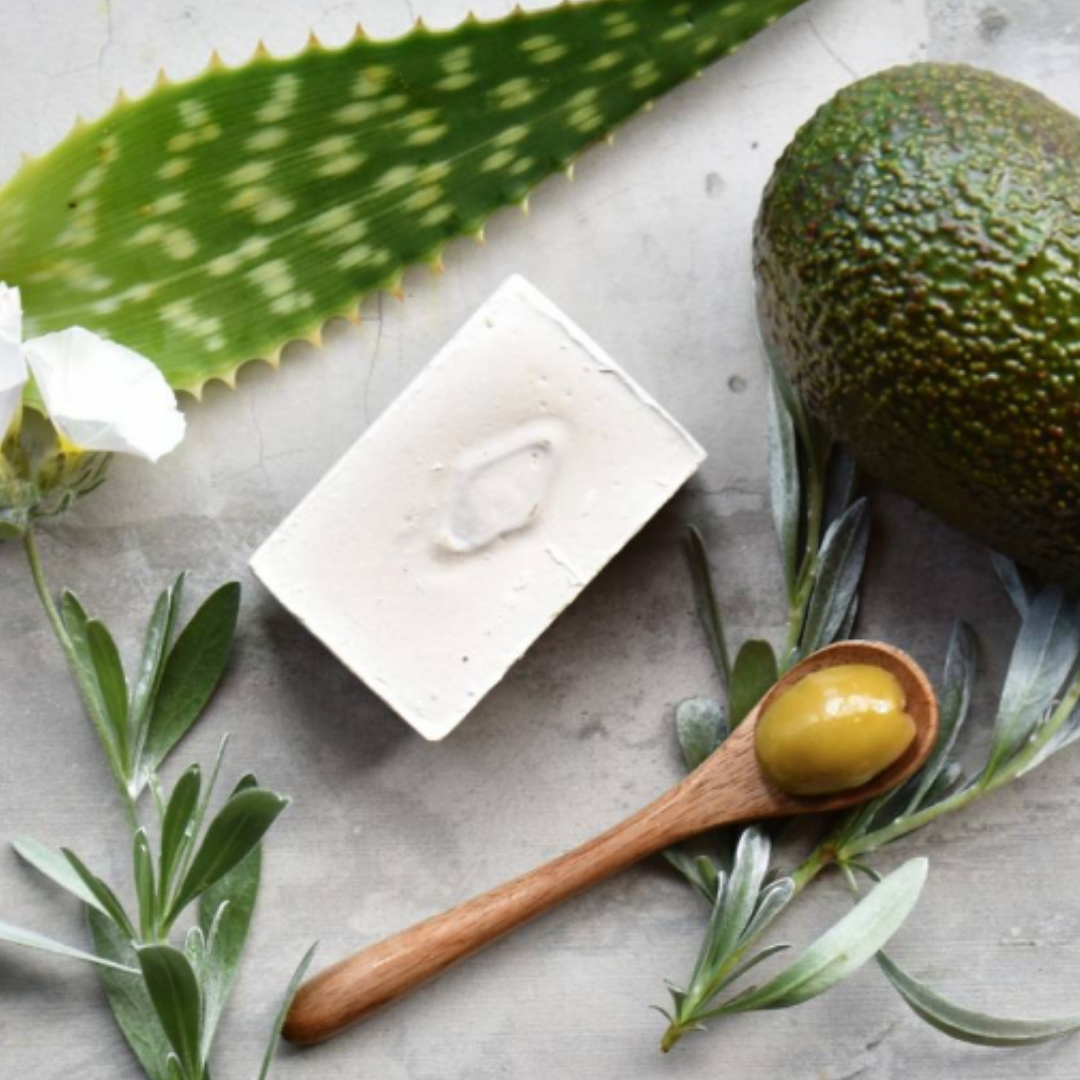Sometimes referred to as “chicken skin” keratosis pilaris is a common and chronic skin condition affecting many children, teens, and adults. It tends to be more problematic when the temperature and humidity drops.
As we head into winter here in Australia, I thought discussing keratosis pilaris may be quite timely and helpful if it’s a condition you’re struggling with.
In this article I cover what keratosis pilaris is and 3 simple skincare tips plus product recommendations from our range to help ease symptoms.
What is keratosis pilaris?
A dry skin condition, keratosis pilaris is characterised by tiny bumps which occur due to an excess amount of dry skin building up around the opening of hair follicles.
These bumps are thick, scaly plugs known as follicular keratotic papules that don’t exfoliate away naturally as skin turnover occurs. They cause the skin to feel rough like sandpaper and often have a red surface.
Those who present with keratosis pilaris essentially have a very compromised skin barrier which leads to dryness. The barrier is lacking in the natural lipids (oils and fats present on the skin’s surface) that help skin keep itself moisturised by sealing water in.
Unable to hold onto water, moisture evaporates off the skin in a process known as transepidermal water loss water loss (TEWL) and leaves skin dry, flaky and scaly.
These dead, dry skin cells pile up around the hair follicle and cause the follicular keratotic papules. Keratosis pilaris usually present on the upper arms, thighs and buttocks and sometimes the cheeks but can appear anywhere hair grows.
A chronic skin condition, keratosis pilaris is quite common in children and teenagers and many adults experience it too. Those dealing with it may have a genetic history in their family of dry skin or atopic dermatitis.
While keratosis pilaris isn’t harmful it can have a profound impact on self-esteem and leave those dealing with the condition very self conscious of their skin.
Tips for managing keratosis pilaris
Getting the symptoms of keratosis pilaris under control and minimising flare ups involves sticking with a consistent, gentle skin care regimen focused on helping the skin retain moisture and encouraging exfoliation.
Tip #1: Moisturise your entire body while it’s still damp
A consistent full body moisturising routine with a quality moisturiser is essential for helping ease symptoms. One of tips I can give you here is to slather on the moisturiser – focusing particularly on the affected areas – while your skin is still damp. This is the most effective way to apply moisturiser because it seals moisture into the skin and slows down TEWL.
Using a quality moisturiser is also important. Avoid those with potentially irritating chemicals and ingredients that may ‘suffocate’ the skin.
Recommended body moisturiser for keratosis pilaris: Manuka Honey Hand and Body Lotion
From your fingers to your toes, this luxurious lotion gives your whole body a hydration boost. This gorgeously thick lotion absorbs easily into the skin, with the healing power and fragrance of Tasmanian honey and olive oil.
Recommended facial moisturiser for keratosis pilaris: Replenishing Face Cream
While keratosis pilaris usually presents on the body, if you are dealing with it on your face, I recommend our Replenishing Face Cream.
Tip #2: Avoid using regular soap and choose a gentle, natural soap instead
The regular soaps you pick up in the supermarket, like Palmolive, are extremely drying for the skin. Using these types of soaps (on your body or face) will only serve to exacerbate keratosis pilaris.
Why are regular soaps so drying? Soap has a very high pH level – usually within the range of 9-10 – while normal healthy skin has a pH range of 5.4-5.9.
When you cleanse with a soap that elevates the skin’s pH environment out of a healthy range it can make dry, itchy skin and keratosis pilaris worse.
Many conventional soaps – either liquid or bars – contain parabens, fragrances and other synthetic additives that can further irritate already compromised skin. They also strip the skin of the essential natural oils it needs to maintain a healthy, strong, and lubricated skin barrier with further exacerbates dryness.
Instead, choose a natural bar soap that respects the healthy pH balance of skin, promotes moisture and works to strengthen a damaged barrier.
Avoid any synthetic fragrances too. It’s always important to read the ingredient label to really understand what is included in a formulation. Many soaps marketed as ‘natural’ can still include synthetic fragrances and other synthetic ingredients.
Recommended soap for keratosis pilaris on the body and face: Lemon Myrtle Soap or Aloe, Avocado, and Sandalwood Soap.
Suitable for keratosis pilaris, our gentle Lemon Myrtle Soap is formulated with Tasmanian extra virgin olive oil, uplifting lemon myrtle essential oil and Manuka honey from Bruny Island.
The addition of ground tea tree leaves encourages gentle exfoliation to lift away the follicular keratotic papules. Olive oil and manuka honey help soften skin and promote moisture retention.
Also formulated with Tasmanian extra virgin olive oil, the avocado oil in our Aloe, Avocado, and Sandalwood Soap doubles down on the moisture retaining and protective properties of the olive oil.
You can use these healing bar soaps on your face and body morning and evening. Always follow with one of our recommended body or facial moisturisers.
Tip #3: Use a dry body brush before showering 
Gentle exfoliation can help break up and remove the plugs of dead, dry skin causing the bumps.
Dry body brushing before you shower is an excellent way to exfoliate your body and soften skin helping reduce keratosis pilaris by preventing hair follicles from becoming clogged.
Resist the urge to aggressively brush your skin as this will cause irritation and lead to further dryness. A gentle brushing motion is perfectly sufficient to lift away dead cells.
Showering afterwards helps to wash away dead skin cells and, as a healthy bonus, helps to stimulate the lymphatic system.
How to use a body brush
I’ve described in detail how to correctly dry brush your body in my article here.
If you’re dealing with keratosis pilaris, I hope these tips for managing symptoms have been helpful. Feel free to reach out if you have any questions about using our products in your keratosis pilaris routine: info@oliveandash.com.au.
Deb
Qualified Naturopath

